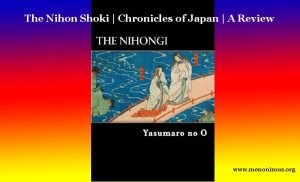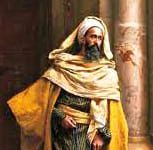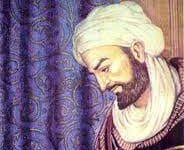The Nihon Shoki | Chronicles of Japan | A Review
The Nihon Shoki Chronicles of Japan A Review
The Nihon Shoki (Chronicles of Japan)-A Review
Introduction:
‘The Nihon Shoki,’ often translated as ‘Chronicles of Japan,’ is an essential and monumental historical text in Japanese literature. Compiled in the early 8th century during the Nara period, it is one of Japan’s oldest extant written records. The Nihon Shoki is a critical source for understanding early Japanese history, culture, mythology, and religious beliefs. This review aims to provide a comprehensive analysis of its significance, content, style, and impact.
Content and Structure:
The Nihon Shoki is divided into three main sections: the Kami-no-Michi or the “Chronicles of the Gods”; the Nihon-no-Mikata or the “Chronicles of the Emperors”; and the Shaku-nihongi (È‘åe,g}), which supplements the preceding sections with additional accounts. The text spans from the creation of Japan and the origins of the imperial lineage to the reign of Empress Suiko, who ruled during the compilation of the text.
Mythology and Cosmology: The Kami-no-Michi section delves into Japanese mythology, describing the creation of the world, the origin of the gods (kami), and their roles in shaping the land and its people. The story of Izanagi and Izanami, the divine siblings who gave birth to Japan’s islands, exemplifies the text’s mythological depth.
Emperor Succession and Genealogy: The Nihon-no-Mikata section outlines the lineage of Japan’s emperors, starting from Emperor Jimmu, who is considered Japan’s first emperor. This genealogical record extends over many generations, providing invaluable insights into the country’s political and dynastic history.
Historical Events: The text records various historical events, such as battles, political alliances, and diplomatic exchanges, shedding light on early Japanese society and its interactions with neighboring regions.
Religious and Cultural Practices: The Nihon Shoki includes details about religious rituals, customs, and practices of ancient Japan, reflecting the cultural and spiritual aspects of early Japanese society.
Style and Language:
Written in classical Chinese, the language of scholarship during the time, the Nihon Shoki exhibits a poetic and formal style. The text is characterized by its use of elegant and elaborate prose, often employing parallelism and metaphor to convey its narratives. The inclusion of poetry, both original and quoted, enhances the literary quality of the text and reinforces the importance of poetry in Japanese culture.
Significance and Impact:
Historical Record: ‘The Nihon Shoki’ serves as a primary source for understanding Japan’s early history. While its mythological elements might not be considered accurate historical accounts, they offer insights into the foundational narratives that shaped the nation’s identity.
Cultural Heritage: The text plays a crucial role in preserving Japan’s cultural heritage. Its stories, myths, and genealogies are essential components of Japan’s national identity and have influenced various artistic and literary works throughout history.
Religious Understanding: The Nihon Shoki provides insights into the religious beliefs and practices of early Japan. It presents the roots of Shinto, Japan’s indigenous religion, by chronicling the interactions between gods and humans.Historiographical Influence: The compilation of the Nihon Shoki marked a pivotal moment in Japanese historiography. It laid the foundation for future historical records and inspired subsequent chronicles and historical texts.
Conclusion:
‘The Nihon Shoki’ stands as a foundational work in Japanese literature and historiography. Its multifaceted content, encompassing mythology, genealogy, history, and culture, offers a unique window into Japan’s early development. As both a historical record and a literary masterpiece, the Nihon Shoki continues to be a source of fascination, research, and appreciation for scholars, historians, and enthusiasts alike, contributing significantly to the understanding of Japan’s rich and complex past. 0 0 0.
The Nihon Shoki Chronicles of Japan A Review
You May Like: Beowulf-A Review
N.B. The article originally belongs to the book entitled ‘The Reviews of Epic Literature Around the World Vol-II‘ by Menonim Menonimus.











